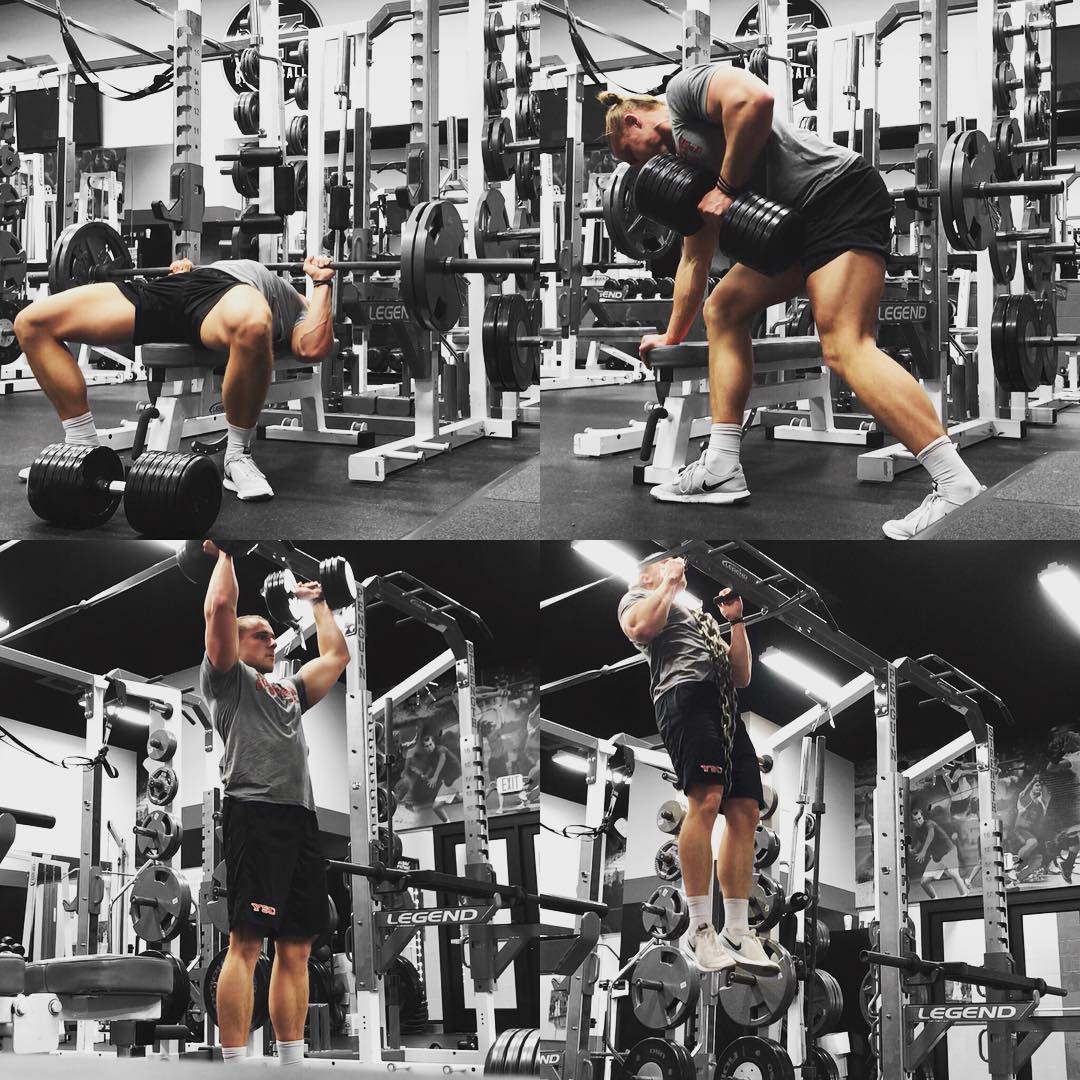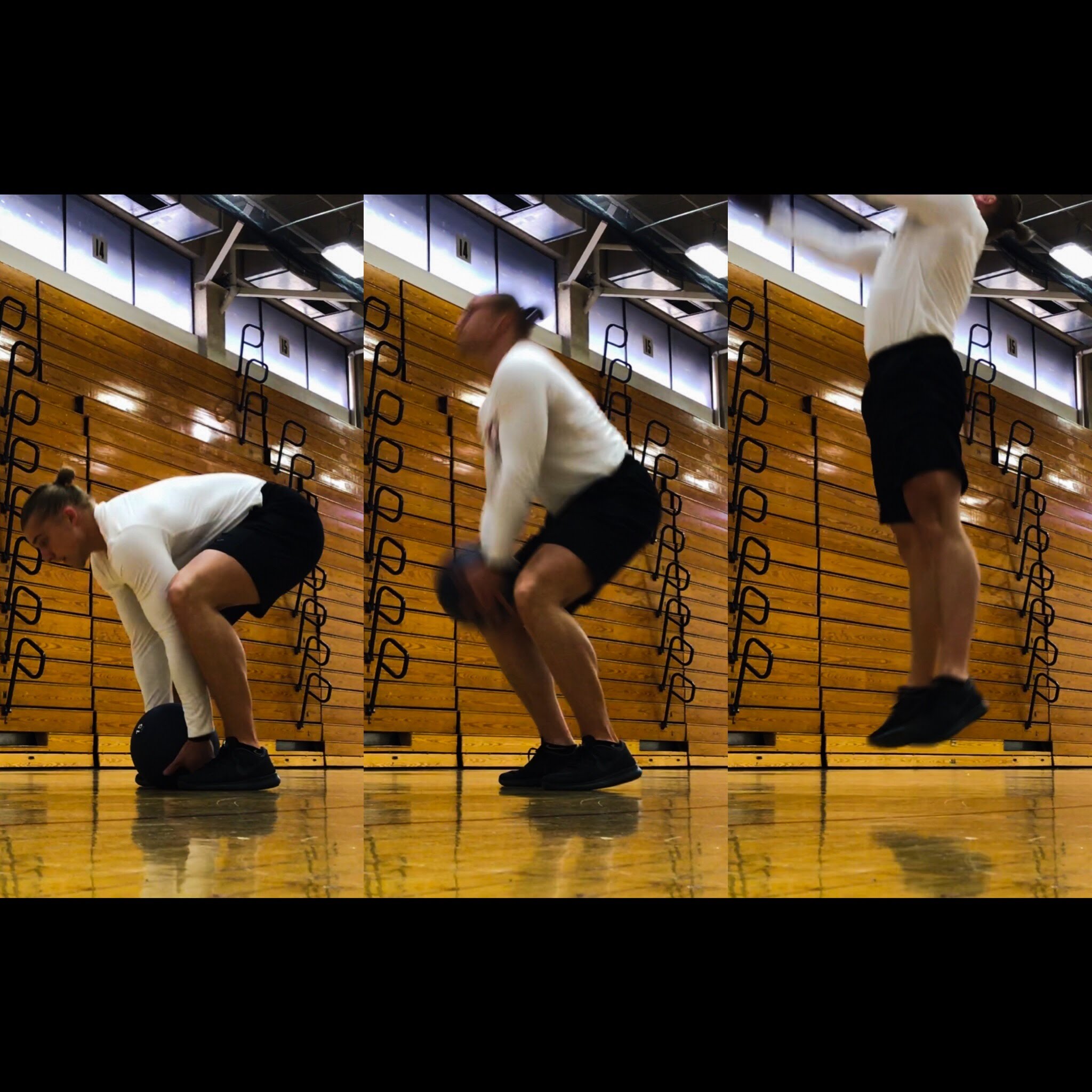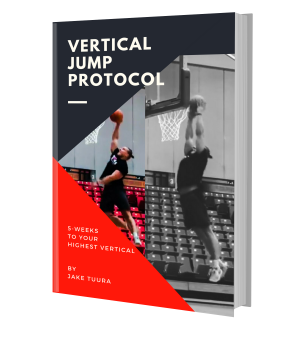The vertical jump is not just a lower body movement. Squats, Deadlifts, and plyometrics aren’t enough to optimize jump performance.
You also need to develop the muscles of the torso:
The erector spinae extend the trunk going into takeoff, enhancing jump height [1].
You should also be training the muscles of the arm:
In a study on twenty males, arm swing (compared to no arm swing) increased jump height by 3.386 inches [2].
In another study on 18 male elite volleyball players, adding arm swing increased jump height by 38% [3].
Another study found an increase of 13.6% in jump height when adding arm movement [4].
WHY DO THE ARMS CONTRIBUTE TO JUMP HEIGHT?
ENERGY: “The kinetic energy developed by the arms is used to increase their potential energy at take-off but also to store and return energy from the lower limbs and to “pull” on the rest of the body” [5].
ECCENTRIC VELOCITY: The arms add to downwards speed and force, causing an equal reaction on the way up. Read more here.
WORK DONE AT THE HIP: Adding arm swing provides additional load to the hip, increasing muscular work done [6].
Jumping with an arm swing increases power on the downwards phase, effectively ‘loads’ the lower body segments, heightens the center of mass before takeoff, and ‘pulls’ the body upwards on the ascent. Every one of these factors increases jump height.
TAKEAWAY
PRACTICE: When jumping, synchronize a violent backwards arm swing with the descent and a violent upwards arm swing with the ascent.
STRENGTH TRAIN THE UPPER BODY: In a study comparing 25 college-age men to 25 college-age women, the arm swing (compared to no arm swing) showed significantly more increase in jump height in men than in women [7]. The researchers speculated it was because of greater upper body strength.
WEIGHT ROOM
Jumping with arm swing puts a high demand on the shoulder and elbow muscles [5]. For general strength and power development of these areas, I recommend the following 6 movements:
STRENGTH/POWER EXERCISES:
- CLOSE-GRIP BENCH PRESS (anterior deltoid and pectoralis strength – elbows near sides – similar to a jump)
- DB ROW (latissimus dorsi strength – for forceful descent)
- DB or BARBELL PUSH-PRESS (shoulder strength – forces the upper body work with the lower body)
- NEUTRAL-GRIP CHIN UP (latissimus dorsi strength – for forceful descent)

SPECIFIC EXERCISES:
- MED BALL SLAM (violent arm depression – similar to jump descent)
- MED BALL OVERHEAD THROW (violent arm elevation – similar to jump ascent)


- Use Concentric-Only as this causes faster rate coding (better for fast twitch recruitment and fast force production).
- Practice maximal vertical jumping, on a Vertec, with approach box jumps, and by dunking.
The Vertical Jump Protocol features two days of upper body training. The program optimizes the upper body’s effect on jump height and trains your entire body to be more forceful and explosive – adding inches to your vertical jump.
REFERENCES
[1] Blache, Y., Monteil, K. (2014). Influence of lumbar spine extension on vertical jump height during maximal squat jumping. Journal of Sports Science, 32(7), 642-51.
[2] Lees, A., Vanrenterghem, J., De Clercqu, D. (2004). Understanding how an arm swing enhances performance in the vertical jump. Journal of Biomechanics, 37(12), 1929-40.
[3] Vaverka, F.,Jandačka, D., Zahradník, D., Uchytil,J., Farana, R., Supej, M., & Vodičar, J. (2016). Effect of an arm swing on countermovement vertical jump performance in elite volleyball players. Journal of Human Kinetics, 53, 41-50.
[4] Mosier, E. M., Fry, A. C., & Lane, M. T. (2017). Kinetic contributions of the upper limbs during counter-movement vertical jumps with and without arm swing. Journal of Strength and Conditioning Research. DOI: 10.1519/JSC.0000000000002275
[5] Lees, A., Vanrenterghem, J., & De Clercq, D. (2006). The energetics and benefit of an arm swing in submaximal and maximal vertical jump performance. Journal of Sports Science, 24(1), 51-7.
[6] Hara, M., Shibayama, A., Takeshita, D., & Fukashiro, S. (2006). The effect of arm swing on lower extremities in vertical jumping. Journal of Biomechanics, 39(13), 2503-11.
[7] Walsh, M. S., Böhm, H., Butterfield, M. M., & Santhosam, J. (2007). Gender bias in the effects of arms and countermovement on jumping performance. Journal of Strength and Conditioning Research, 21(2), 362-6.
[8] Blache, Y. & Monteil, K. M. (2013). Effect of arm swing on effective energy during vertical jumping: Experimental and simulation study. Scandinavian Journal of Medicine and Science in Sports, 23(2), e:121-9.




